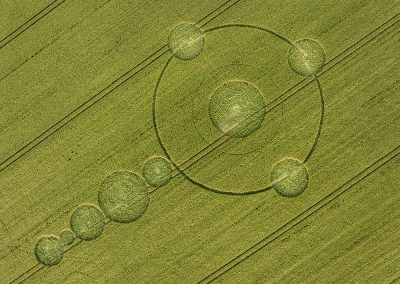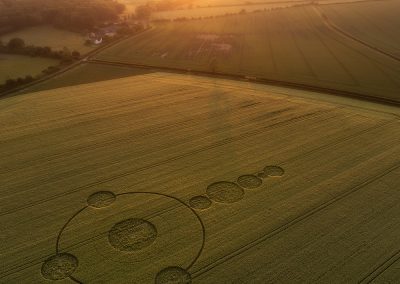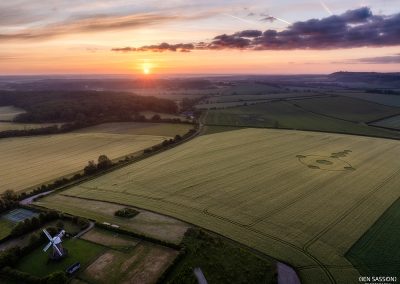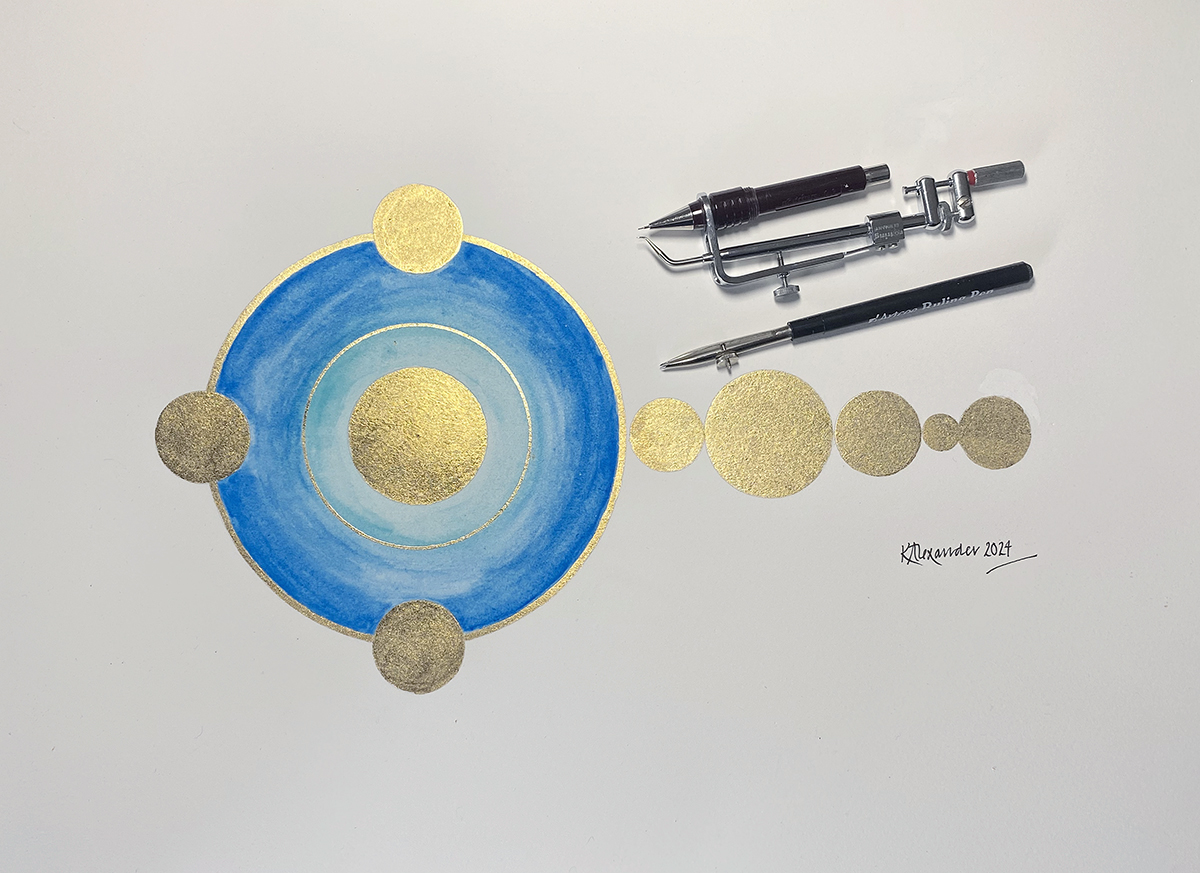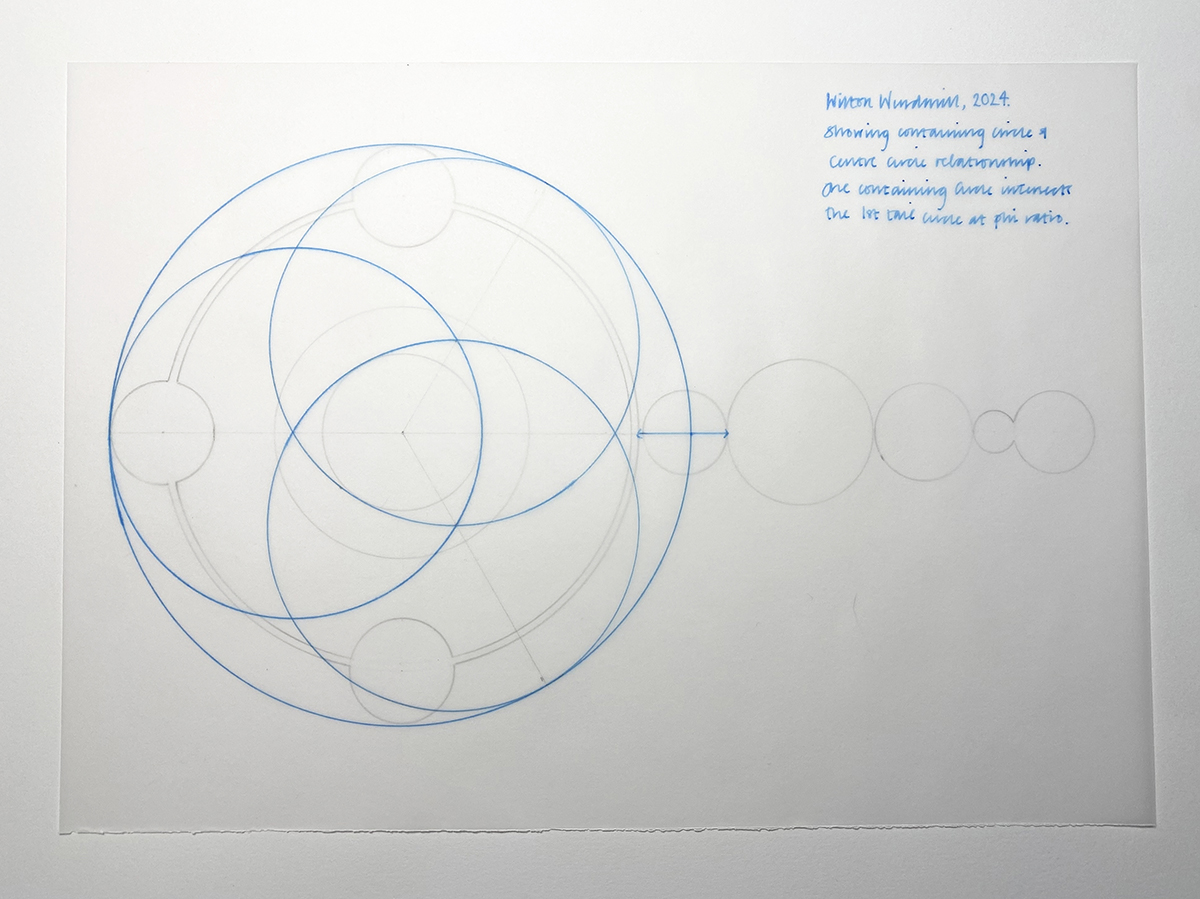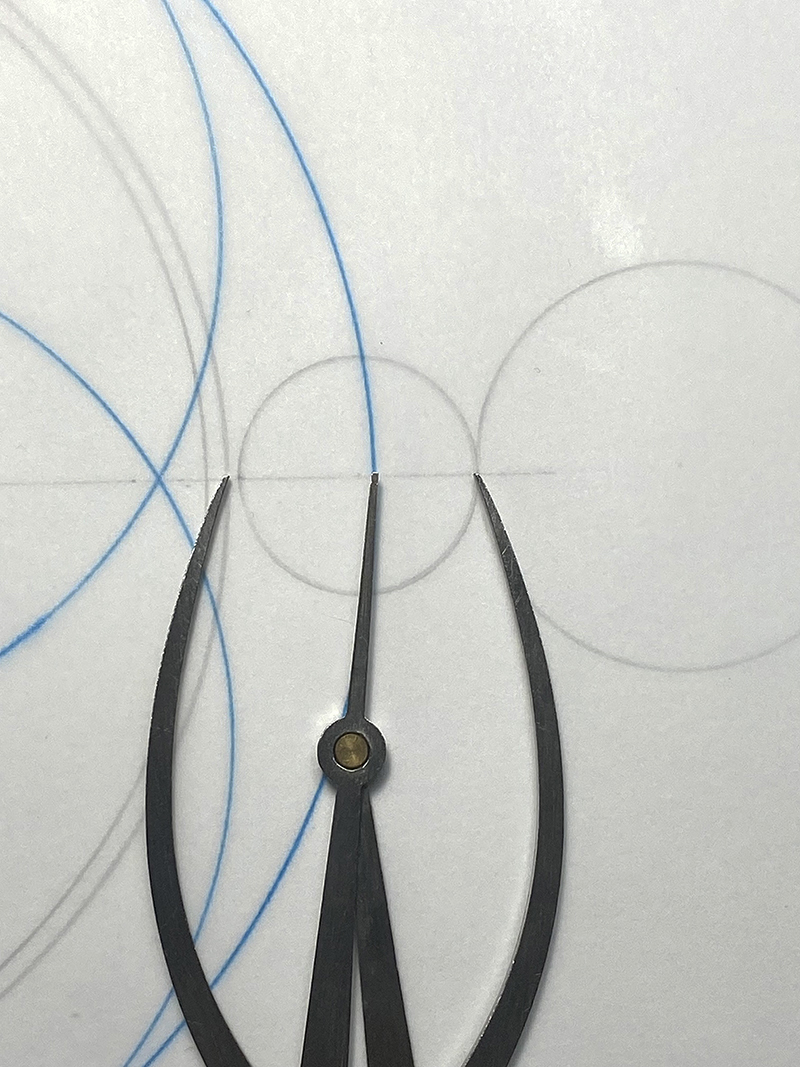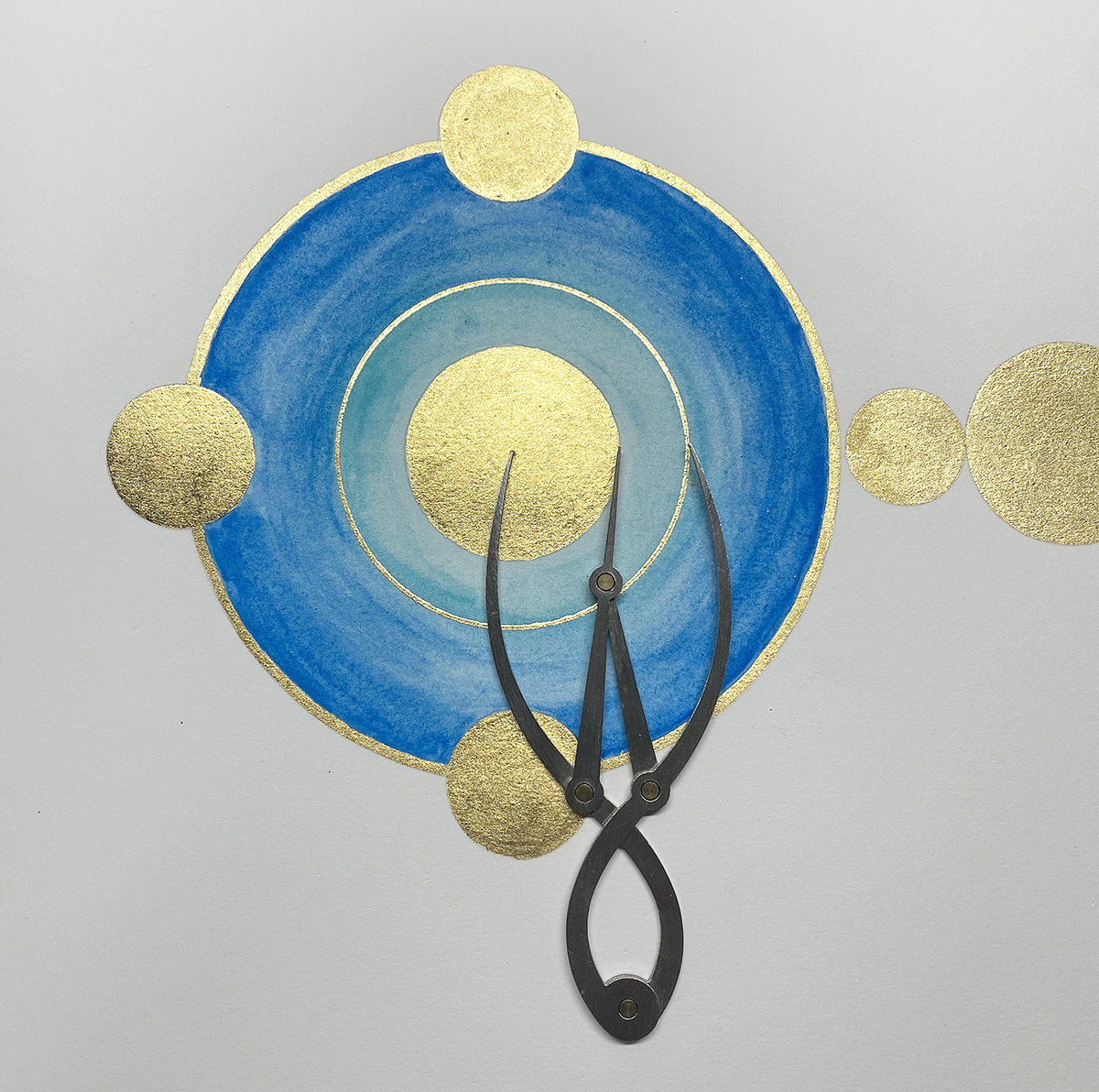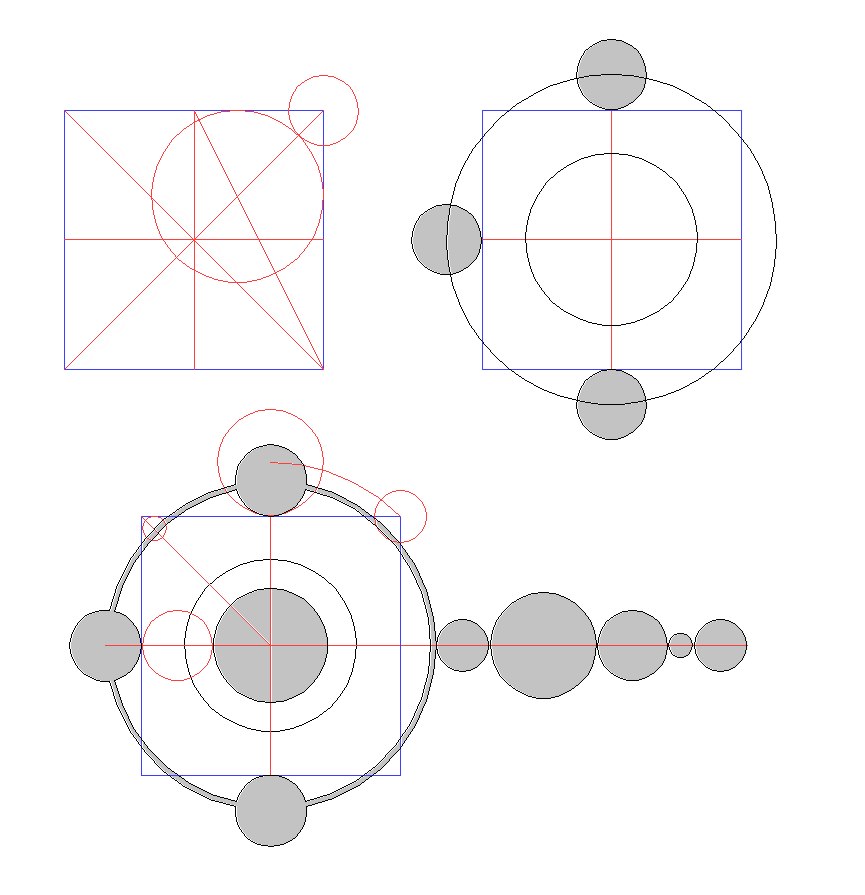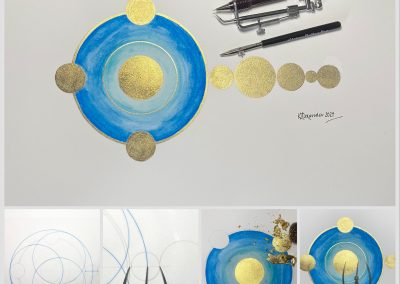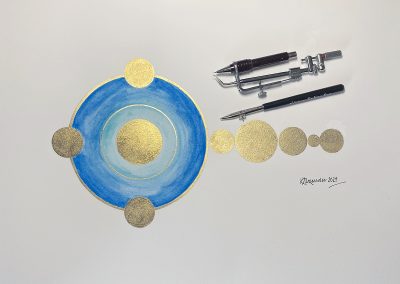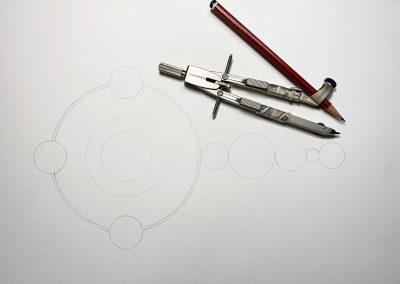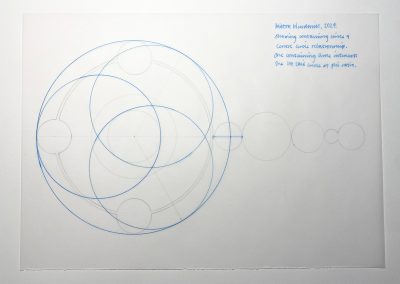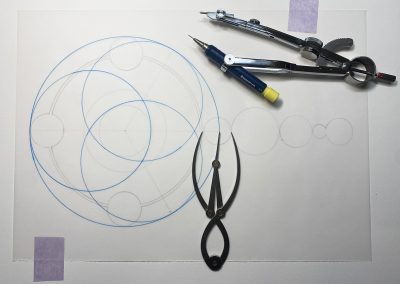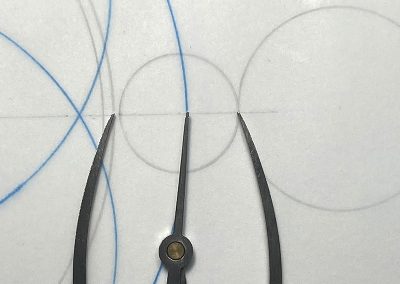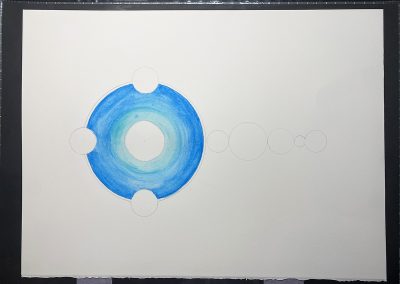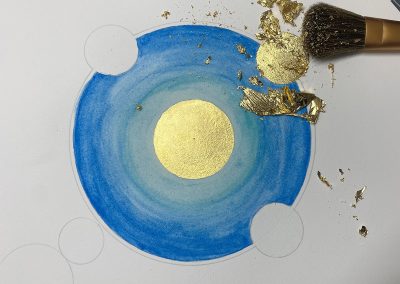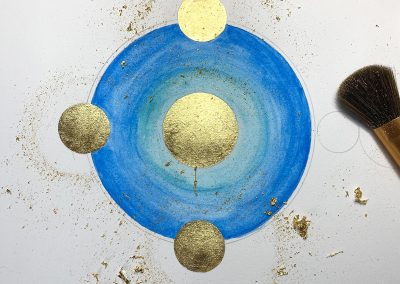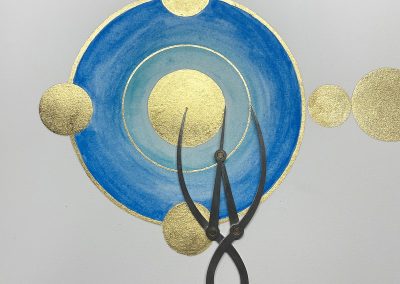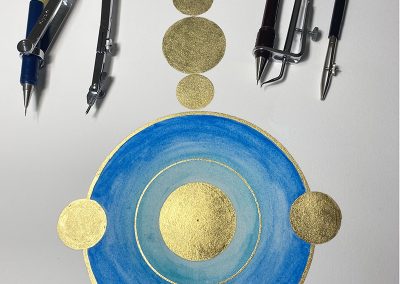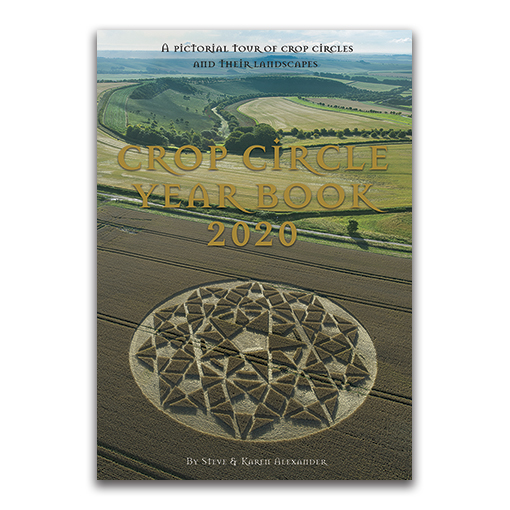Wilton Windmill, Wilts.
(Near Marlborough)
Detail & Location: This circle was first reported on the 12th June 2024. This circle could have been there several days before being reported as it shows definite signs of re-growth. Google Maps Link. OS Grid Ref: SU 27916 61510. The circle measures approximately 330ft in length.
Visiting: You will need permission from the farmer to enter this field. As far as we are aware no such public permission has so far been given, therefore if you wish to visit this circle you will need to seek permission yourself.
Location & History: Wilton Windmill lies not too far from Marlborough, in the village of Wilton (see above for Google Maps link and O.S number). Wilton windmill is still an operating windmill and is open to visitors. You can read more about Wilton Windmill here. This part of the Wiltshire landscape is dotted with tumuli and small earthworks.
About this crop circle: This crop circle is a composite of the classic ‘Quintuplet’ and ‘Thought-bubble’ designs. The Quintuplet goes back to the earliest days of the modern phenomenon (1980s/1990) and the Thought-bubbles to the mid 1990s. Of particular interest is the very fine ring around the central circle of the quintuplet which is too narrow to walk in.
Please see the Geometry Gallery below for more details as we have them.
Visiting the Circles? If you are thinking of visiting any crop circles this summer, please read our Visiting the Crop Circles section. It’s full of useful information and etiquette for visiting the countryside and the crop circles. Please remember that you should not enter any fields without the express permission of the farmer and you will need to be aware of and abide by any restrictions in place in the UK in response to the Covid-19 pandemic – which at the time of writing is none.
Click here for Copyright Information about the reproduction of images on this website.
Please Help to keep us Flying in 2024: We hope to take to the skies again in 2024 to record the circles that appear this summer. If you have enjoyed looking at our pictures and information please consider making a small donation to keep us flying. There are so few of us left regularly recording the circles it’s really important that we continue. And while some now use drones to record the circles, it is important that there are still images taken from aircraft where the best quality camera equipment can be used and images that include the broad vista of the landscape can be taken. This kind of photography is expensive and it gets harder with each passing year to raise the funds we need to continue our work, but if everyone who regularly looked at this website made a small donation we would meet the funds we need. You can make a donation here.
NOTE: Some of the images below are beautiful landscape scenes. Click on each image to enlarge them and see the whole picture.
THANKS: Our grateful thanks to Ben Sasson for allowing us to feature his photographs on this page.
https://photography.bensasson.com/work
Instagram – @bensassonphotography
Image Licencing
We can supply high resolution images of many of our photographs and the sky is the limit as to what they can be used for! Choose from our extensive library or contact us to commission aerial photography for your project.
Geometry Gallery
Something Old, Something New.
The Wilton Windmill crop circle of 2024
By Karen Alexander
(Click on any of the images for a larger view)
Introduction
The first crop circle of any season is always interesting. Will it set a tone or theme for the coming summer? More often than not, the first circle is a relatively simple one. I say simple, but in the crop circle world, little is simple. The crop circle at Wilton Windmill reported on the 12th of June, was a relatively late start to the season. The circle was in a field of young barley. Those who may have read our pre-season information page on our website will know that the UK weather while not excessively cold, has been very wet and there has been very little sunshine. This has lead to many of the crop fields in the UK being damaged, or flooded and some crops failing. It has not been good year for arable farming in the UK. So, it was unsurprising that we had such a late start. Where we go from here is anyone's guess, of course.
Overview
Those of you that have read me before will know the I rarely draw or write about the circles in a hurry. I am so rarely first with an analysis of a formation that to even mention such a thing would be almost absurd. I like to take my time. Like a good cup of coffee, crop circles are to be savoured, appreciated and to be contemplated without interruption, haste or over excitement. In this world of clicks, hash-tags, trends and reactions, I am just happy be here for those that find, or need me.
As this is the first circle of the 2024 season, I hope regular readers will forgive me writing this article with the newcomer in mind. New seasons bring new people and it's nice that everyone feels they can get something from this website. If you are a newcomer, welcome to the Crop Circle Campus - everyone is welcome!
At first glance, this crop circle is a riff on the classic quintuplet design of the late 1980s/early 1990s. As we will discover later, it does what so many circles of this design do - which is to Square the Circle.
The Quintuplet
What is a quintuplet, some of you may ask? A quintuplet is an arrangement of five dots (or circles) like on a dice. A central circle is surrounded by four equidistant circles each at 90º. While there are five elements in the design, geometrically it is four-fold because of the 90º arrangement of the outer circles.
Mothers & Daughters
The late, and very great, crop circle researcher Michael Glickman called the central circles in these types of designs the Mother circles and the four 90º satellites, Daughter circles. Because I love the language, and I want to honour Michael and his contribution to the understanding of crop circle geometry, I will continue to use the same.
The Quintuplet at Wilton
In the Wilton Windmill crop circle, the quintuplet is not a classical one. As you can see from the image above, there are only three circles of the same diameter that sit at 90º to the centre circle at a matching distance. The fourth, while still at 90º sits further away from the central circle and has a different diameter. This fourth circle then becomes the first of a 'tail' of five circles, each of those five circles having differing diameters. The four-fold nature of the quintuplet is the exoteric geometry of the crop circle. It's the geometry that is obvious and which can be plainly seen.
Four and its meanings
The art of sacred geometry tells us above all else, that numbers have meaning; they have qualities as well as quantity. When looking at the crop circles one of the things we use are these meanings and qualities to read into the designs - a crop circle hermeneutics if you will.
Unlike numerology, the meanings of numbers in sacred geometry is taken directly from observing the way we see number unfold in the world and from their geometric behaviours. To be fair, we do observe, but we also listen with an 'inner ear' (like the inner eye) for the nuance and relationships we are presented with.
At its most basic, four is about matter, substance, 3-D reality; three points are needed to describe a shape on a plane, but a fourth is needed to indicate depth and therefore dimension. As an archetype, four is the foundation, or corner stone, that upon which all is created. Traditionally, four is the number of the Earth, while the Circle symbolises the heavens. In his 1994 seminal book 'A Beginner's Guide to Constructing the Universe', mathematician Michael Schneider calls four, 'Mother Substance', drawing from the connection between the Latin word for Mother - Mater - and the word Matter. It is both beautifully observed and poetic.
In the quintuplet, as I have already noted, its essential four-ness is expressed with five dots (or points). Therefore this design marries four-ness and five-ness. Five is the number of life; the generation of a pentagram gives us the Golden Section & therefore the Fibonacci sequence of numbers, which is found in the geometry and growth patterns of all living things - including us.
Here, then, we have a design that at its root expresses something about the relationship between life, growth and matter. Sacred Geometry is a universal language, its use in the crop circles is fascinating - a shared philosophy? - I'd like to think so.
Esoteric Geometries
For those of you with a little crop circle knowledge you will know that the circles very often also have an esoteric geometry, that which is unseen, but nevertheless present. Early pioneers in the crop circle field such as John Michell, John Martineau and Michael Glickman all sought out the hidden proportions and ratios in the crop circle designs in the quest for deeper understanding. Not only did they find them, but in doing so they also revealed the depth and inner beauty of the formations.
One of the things routinely looked for is any relationship between the centre circle and the perimeter of a formation. In the Wilton Windmill formation the relationship is between the central circle and a circle drawn to contain the quintuplet - this is a circle that touches the outer perimeter of the three matching daughter circles. See Fig 2.
Using the distance between the inner perimeters of those three daughter circles and the perimeter of the central circle as a radius, and drawing in three equidistant circles (at 120º each) which touch the perimeter of the containing circle, we can see that where they intersect they contain the central circle and give its precise size. This isn't jiggery-pokery, it only happens when the relationship between the two circles is 0.267. So here we have a hidden 3-fold relationship.
What seals the deal for me is the way in which the perimeter of this large containing circle intersects the first circle of the 'tail'. It intersects this small circle at precisely the Golden Section (phi) point (1-0.618). You can see in Fig.3 how this works using Golden Section dividers on my drawing.
The presence of the Golden Section at the point where the missing daughter circle should be, locks-in the significance of the 3-fold discovery above. The position of the containing circle is meaningful in more than just one way.
The Meaning of Three
If one is unity and two is multiplicity, then three is what unites them. Three is the first whole after one (or unity). There are many archetypal trinities (or tri-unities) in human culture; Father, Son and Holy Ghost, Maiden, Mother and Crone - how many more could you name? In this crop circle, three is what unites the head of this design - its use is apt and meaningful. It creates a lucid, logical, coherency (or wholeness) to a quintuplet with only three matching daughter circles.
The return of Phi
There is also another phi relationship at work in this formation and that is in the relationship between the central circle and the very fine ring that surrounds it. See Fig 4.
I hope by now you are all beginning to glimpse the idea of this crop circle as a geometrically unified whole. What may at first seem to be just a pretty geometric pattern, in fact turns out to be incredibly well thought-out, consistent, lucid and intelligible 'statement'.
Phi in the Tail
In a recent YouTube video, dream researcher Daniel Rekshan looked at the Wilton Windmill crop circle and drew a recreation of the pattern. In this video (linked here) he shows how he interprets the circles in the tail as all being linked by Phi relationships to one another - it's a fascinating analysis.
Finally...
Squaring the Circle
In another of his excellent analyses of this crop circle, researcher Peter van den Burg showed that the quintuplet in the Wilton formation 'Squared the Circle'. See Fig 5. When a square is drawn which touches the inside of the inside of the three matching daughter circles, this has a close to equal relationship to the circle which intersects the same three circles. You can read his analysis on his Facebook page here.
The 'Squaring of the Circle', is an old practical and philosophical exercise in which (using only compass and straight-edge), the goal is to create a circle and a square with the same perimeters or areas. For those who remember a little geometry from school, you may remember that it is impossible to measure the area, or perimeter of a circle, it's why we use Pi (3.141) in the formula Pi-R-Squared when making our calculations.
However, the point of attempting this match, is a more symbolic than mathematical. The point of the exercise is to make a marriage between Heaven and Earth, or to bring Heaven down to Earth. In others words, it is the basis of all sacred space. Square temples (or spaces) topped with a dome, works on the same principle, it is an attempt, symbolically, to make a space where Spirit can meet Mankind. The unknowable circle represents the ineffable nature of the Divine, the square the manifest, created world.
It was discovered back in the 2000s, by geometer Allan Brown that almost all quintuplets that have appeared as crop circles 'Square the Circle'. This is a remarkable finding, one that defies coincidence, chance or conventional thinking. Not only this, but that some crop circles have even offered new ways in which to do it.
In Conclusion
It is my long held contention that crop circles are not codes, or puzzles or even messages in the conventional sense. Rather, each is a coherent statement of sorts, an offering of ideas, relationships, questions, or themes to be considered. They are a kind of an intelligence test - what will we make of them, how will we engage with them? As Michael Glickman said, the crop circles are put down as toys on a nursery floor, just to see what we'd make of them. He also called the crop circles Love Letters, a notion with which I too concur, they are more like gifts of geometrical poetry, than a message in prose, or a set of instructions.
The Wilton Windmill crop circle spoke to me of many things, of beauty, mystery of the nature of the relationship between Matter and Life, of the Divine to the manifest World. It created a sacred space in the landscape, a temporary temple, if you will. It also spoke of the patterns and rhythms that enable this entire creation to grow and evolve. It will be, no doubt the subject of many hours of meaningful dialogue between crop circle colleagues and the many who have been moved by it.
The season is off to a great start!
See you around the campus!
My painting was worked in watercolour paint and genuine gold-leaf on a hot-press cotton rag paper.
Date
12.06.2024
Crop
Barley
Visiting
Google Maps Link. OS Grid Ref: SU 27916 61510
You will need permission from the farmer to enter this field.


